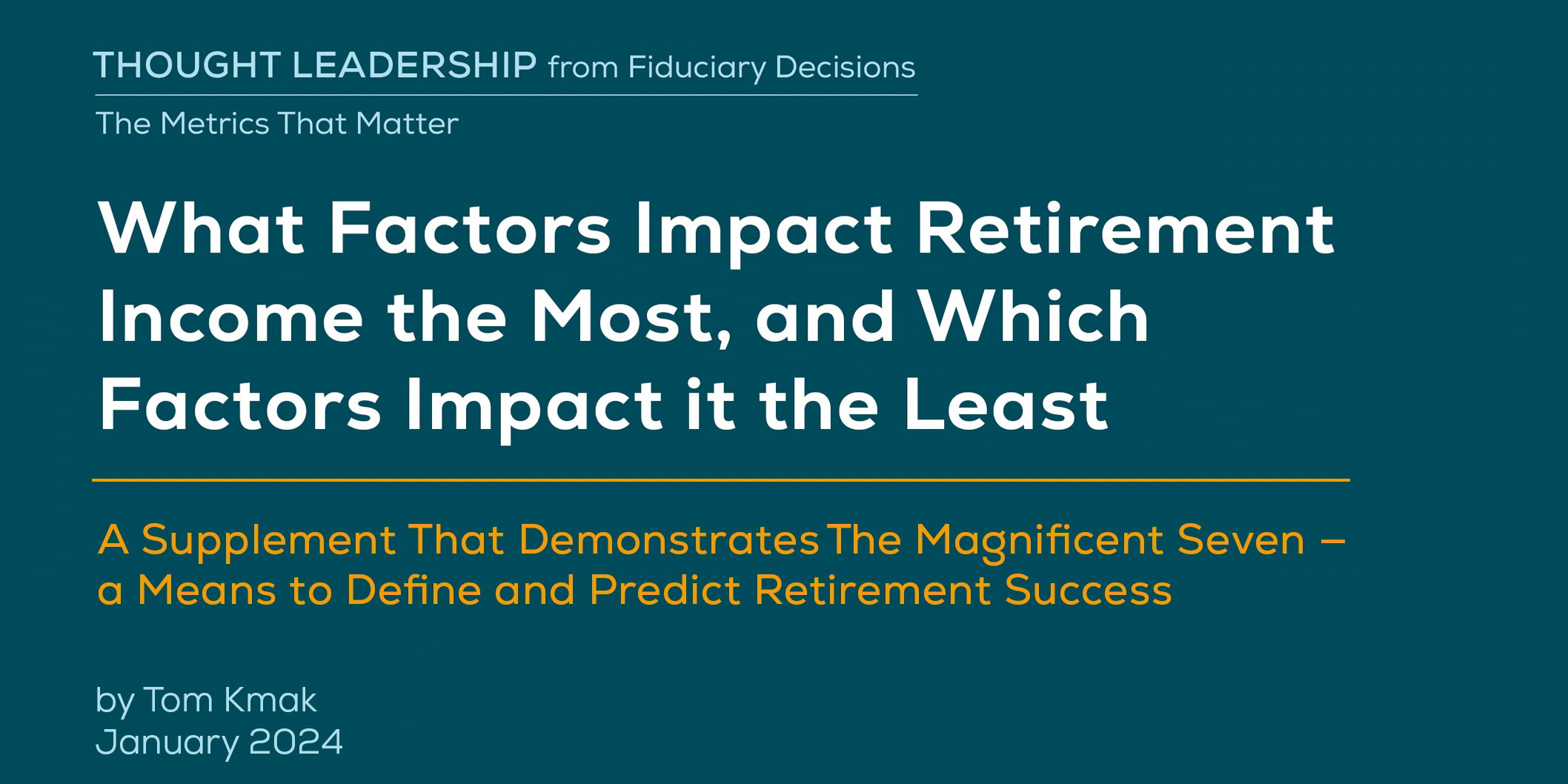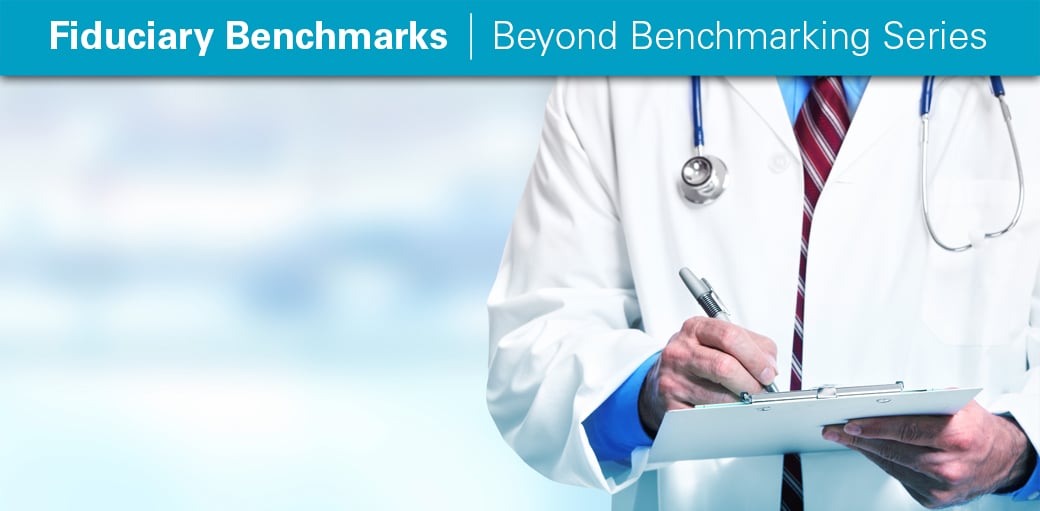Steps to De-Risk Your Plan Advisory Practice During 2019
by Matt Golda
Feb 06, 2019

Steps to De-Risk Your Plan Advisory Practice During 2019
If you have been in the industry as long as we have, you’ve experienced the effects of a market downturn. Historical bear markets, the disastrous financial crisis of 2008, and the recent swings of volatility causing severe panic among investors. Although institutional business is slightly more insulated, plan sponsors and participants are starting to feel anxious about their 401(k) plan.
Advisors charging asset-based fees may be first to feel tremors: annual plan revenue is directly affected by severe market fluctuation. When the stock market is on the rise, everything is great; your revenue also experiences the uptick. However, if the stock market rapidly declines, your annual plan revenue will too. Assuming a typical plan asset allocation, we estimate that for every 10% of stock market value lost, asset-based advisor fees could decline by around 6% – not inconsequential when considering the actual experiences of the worst markets of the last 20 years.
Dramatic swings in the market tend to create anxiety about investment performance and ambiguity is not exactly good for your retirement plan practice. So, what is one to do? We suggest you focus on things you CAN control like operating efficiency, getting paid what you are worth, and fostering high levels of client retention. Below are a few of our recommendations to help your practice thrive regardless of the market’s directional gyration.
Improve Your Retirement Plan Practice
Review and Assess Service Model
Whether you are managing a small or multi-billion-dollar retirement plan, follow the service model you have established. This will help you to reduce liability exposure and improve internal performances. The first step is to consolidate your services based on client’s tiers. For example, depending on your advisory engagement level and needs of the plan, you could implement a service standard for broker of record, 3(21) co-fiduciary, and 3(38) investment management clients.
Align Service Model for Greater Efficiencies and Value Proposition
Defining a clear, concise process of how you attend to different clients can save time and resources for greater efficiency. This will help to communicate your message more clearly, and more importantly, justify the value of your work. For example, the stock market takes another dive, and your clients begin to question their plan fees – how are you justifying your services? Market uncertainty doesn’t determine your level of plan support, be able to defend that.
Invest in Tools That Help Me Do My Job Better
Utilizing financial technology tools can help advisors be more productive and streamline internal efficiencies. Your clients rely on you to bring them a high level of knowledge, accuracy of information, and quality data strategies. Tools help advisors do just that – from FeeChecker™ to FeeBuilder.
Additionally, keep in mind that change can also be an opportunity. Leveraging technologies such as online Form 5500’s can also boost prospecting efforts to grow your business.
Evaluate Recordkeeper Relationships
Let’s talk about the c-word: consolidation. Recordkeeper consolidation, especially the multitude of blockbuster acquisitions leading up to 2016, creates cause for concern. However, there may still be a silver lining. Review your current recordkeeper partnerships and ask about potential technology enhancements, financial wellness partnerships, and other new features that could strengthen your service model. By aligning with quality recordkeeping partners, you can help your retirement plan clients receive the best value.
Client by Client in Order of Priority
Analyze Fee and Service Relativity
Whether you use tool technology or pre-established methods, revisit each client’s fee and service relativity this year. With excessive fee lawsuits on the rise, you do not want to find yourself in the midst of one. Besides mitigating risk, it also gives you the opportunity to measure whether what you’re being compensated appropriately. The workload associated with a $1 million versus a $50 million plan is significant, your payment should be reflective.
Evaluate Adjustments
Plan sponsors would be more than pleased to hear that your fee analysis revealed a decrease rather than an increase. However, both sides are possible, make sure you communicate with them how you came to these results. If you find that a fee increase is necessary, back your conversation by outlining your value with your service model. Demonstrate what you do for the plan and the benefits from you being their retirement plan advisor.
Schedule Time with Clients to Cover Results
If you have determined that fee adjustments need to be made to the current pricing model, schedule time with your clients! If the next face-to-face meeting isn’t until next quarter, consider having a 30- to 60-minute phone call with the retirement plan committee to discuss the results.
Document, Document, Document
Documenting results with your clients is extremely important for numerous reasons. First, it is mutually beneficial for an advisor and the client to have access to any plan information and changes. It also helps mitigate risk from potential DOL audits and lawsuits.
Continuously improving your retirement plan practice is extremely important especially now with the volatile state of the market. Though there is no way to control the future or predict uncertain times, taking these concrete steps can help mitigate the risks for your retirement plan practice.
About Author:

Matt Golda, Matt Golda CFA, Senior Vice President, Technology and Operations
Matt is responsible for the overall product development efforts of the firm. In addition, Matt oversees all technology and operations issues including the development and execution of the FDI portal and the FDI reports.


